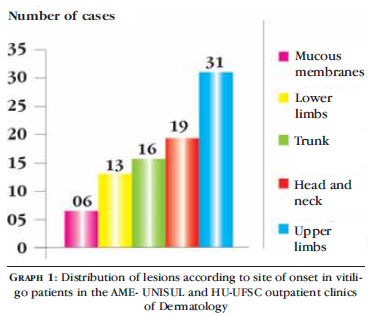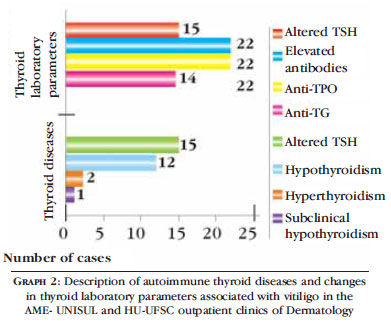BACKGROUND: Vitiligo is considered the most frequent acquired hypomelanosis. Although its pathogenesis is uncertain, it is believed that autoimmune etiology is the most plausible. This theory is based on the coexistence of vitiligo with autoimmune diseases. OBJECTIVES: To describe the epidemiological profile of vitiligo patients and to estimate the prevalence of the association of vitiligo with autoimmune thyroid diseases. METHODS: A cross-sectional study was conducted through analysis of the medical records of patients diagnosed with vitiligo in the AME-UNISUL Outpatient Clinic of Dermatology and at HU-UFSC. The clinical and laboratorial characteristics of these patients were assessed. RESULTS: 85 medical records were evaluated; 56 patients were female, with a mean age of 37.14 years and mean onset age of 25.25 years. Vitiligo vulgaris occurred in 70.6%. Autoimmune thyroid diseases were found in 22.4%. Other autoimmune diseases were identified in 5.9%. Patients with positive thyroid autoantibodies showed a probability of extension of vitiligo greater than 25%. There was no statistical difference with regard to the clinical characteristics of vitiligo in patients with or without autoimmune thyroiditis with hormonal change. CONCLUSION: The findings of this study are similar to those obtained by other authors, showing that autoimmune thyroid diseases are more common in patients with vitiligo.
Autoimmunity; Thyroid diseases; Vitiligo






